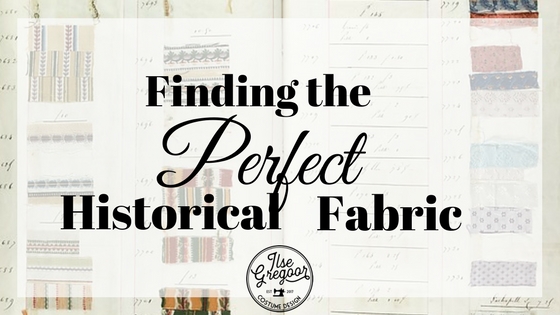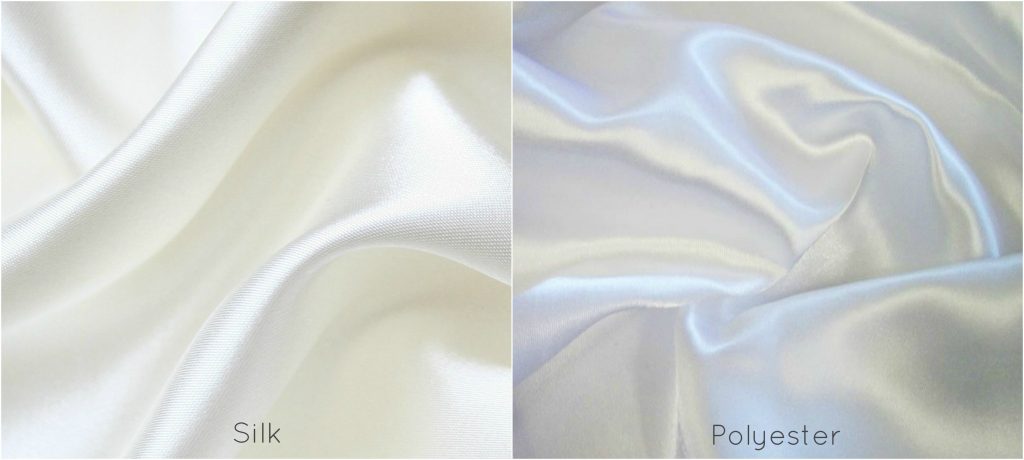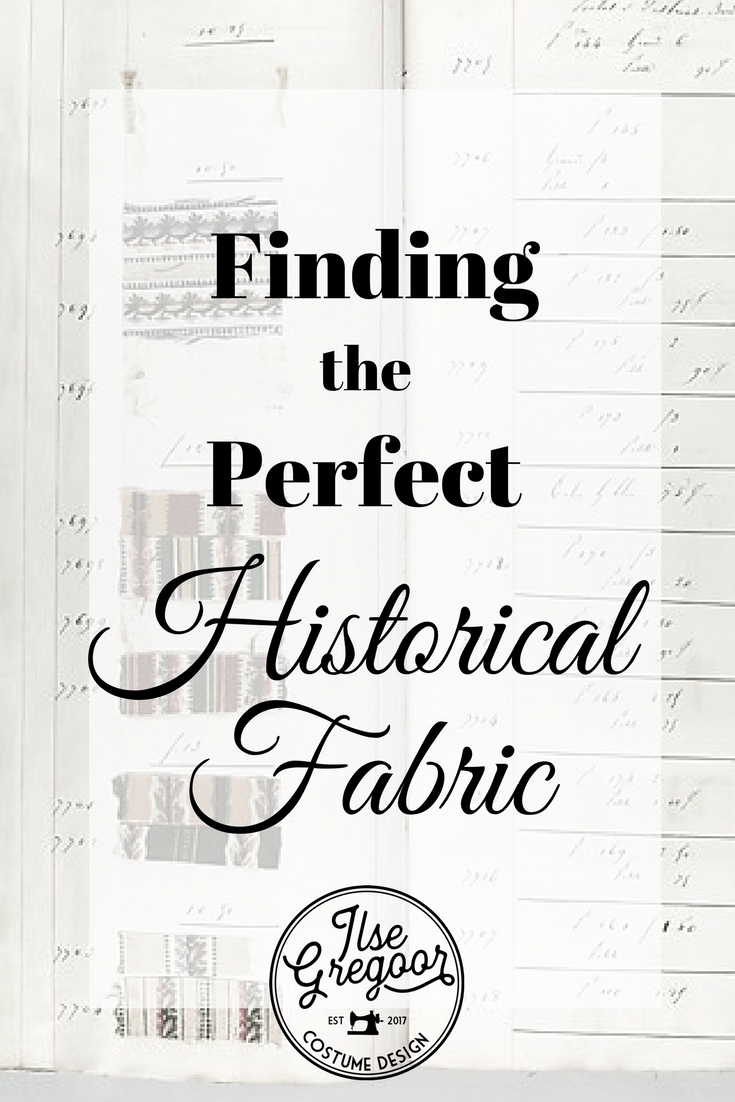Historical Fabrics: What fabric to use
Like I mentioned in this post, about historical accuracy, how far you want to take historical accuracy is entirely up to you. But if you want your historical garment to look as historically accurate as possible, fabric choice is a big part of that. It is also the most difficult part, because you are limited by the options your local market or fabric shop provide, and the fabrics available to us differ greatly from the ones available a few hundred years ago. Hopefully, this post will aid you a bit in making a choice in fabrics.

Different fibers
Firstly, a note about the sort of textiles you can choose. These days, we have all sorts of different fibers that make up our textiles; cotton, polyester, acrylic, viscose, wool, etc. Back in the days, there were far less. Up until around 1750 to 1800, your choices were basically linen, wool or silk. From around that 1750 mark, cotton was used for clothing too. (sidenote: this is mainly focusing on the western European fashion history. Of course, other continents had used cotton for over centuries. Also, cotton was also imported into Europe from the middle ages onwards, but was not largely used in clothing yet.)
I would recommend that if you want to stay completely safe, always go for one of those four natural fabrics. I personally like to stay away from any synthetic fibers; polyester, polyamide, nylon and acrylic. For example, I see a lot of polyester satin used as a substitute for silk. Again, if you like this fabric, by all means go for it. But I personally think that the sheen on these synthetic fabrics is always very noticeable and makes the gown look less period accurate. (however, this is just a pet peeve of mine, also because I have an allergie towards synthetic fabrics, so I can’t wear them in my day to day life either.)

Then, there is the matter of cellulose-based fibers and mixes of different fibers. I would say these are judgement calls. Firstly, cellulose-based fibers, like viscose (also called rayon), cupro and lyocell, are technically modern inventions. But they can work very nice as either cotton or silk substitutes. However, there is a huge variety in them, so just use your own judgement. Next, you also have mixes of different fibers, like a wool/acrylic or cotton/polyester combination for instance. Again these are judgement calls, but they can work very nicely too. Especially the blended wool is a good substitute for pure wool I think. Because they look and behave like wool, but come at a much cheaper price. Sure, when looking closely at these, you can see that there is a difference with pure wool dresses. But honestly, who is going to look that closely to your dress when you look so gorgeous in it.
Historical patterns
Once we have the problem of different textiles out of the way, we come to the difficult part of finding a historically accurate pattern. First of all, when in doubt, go plain! Solid color fabrics have always been used, and are easiest to find and work with. You can always add extra interest with lots and lots of trimmings.
But of course, sometimes we want something different. Like maybe a nice floral or stripe pattern of some sorts. And how do you know if a certain pattern has been used in the period you are trying to portray? You can use extant garments and images from those periods as your examples. But you also have another resource at our disposal: Fabric sample books!
These books contain a lot of little swatches of fabrics. they were used by merchants and tailors and sorts to show their clients what was available and fashionable. Since a lot of these books are dated by year we get a pretty good idea of what was available and fashionable during these periods. And we also get a lot more options that if we were to rely solely on existing garments.
When I have plans for a new garment, and I am going out to buy fabric for it, I like to save these pictures to my phone so I can compare them while I am looking through the fabrics. (please keep in mind, before driving yourself crazy, that finding an exact replica of one of this historic fabrics might be impossible, but you can use it as a reference, an inspiration source, and judge for yourself if it matches closely enough.)
The images below are collages from the different books I found because otherwise, this post would be way too long and chaotic. But the collages are linked to the original source, so you can see all the images full size for better comparison.
1700’s





1800-1850



1850-1900





I hope these fabric samples can help you in choosing the right fabric for your next costume. And if not, than hopefully you still found it interesting to see a sampling of historical fabrics. If you do find a fabric that closely resembles one of the ones you found in these books, please let me know. And don’t forget to subscribe to my email newsletter for inspirational fashion plates each month.





